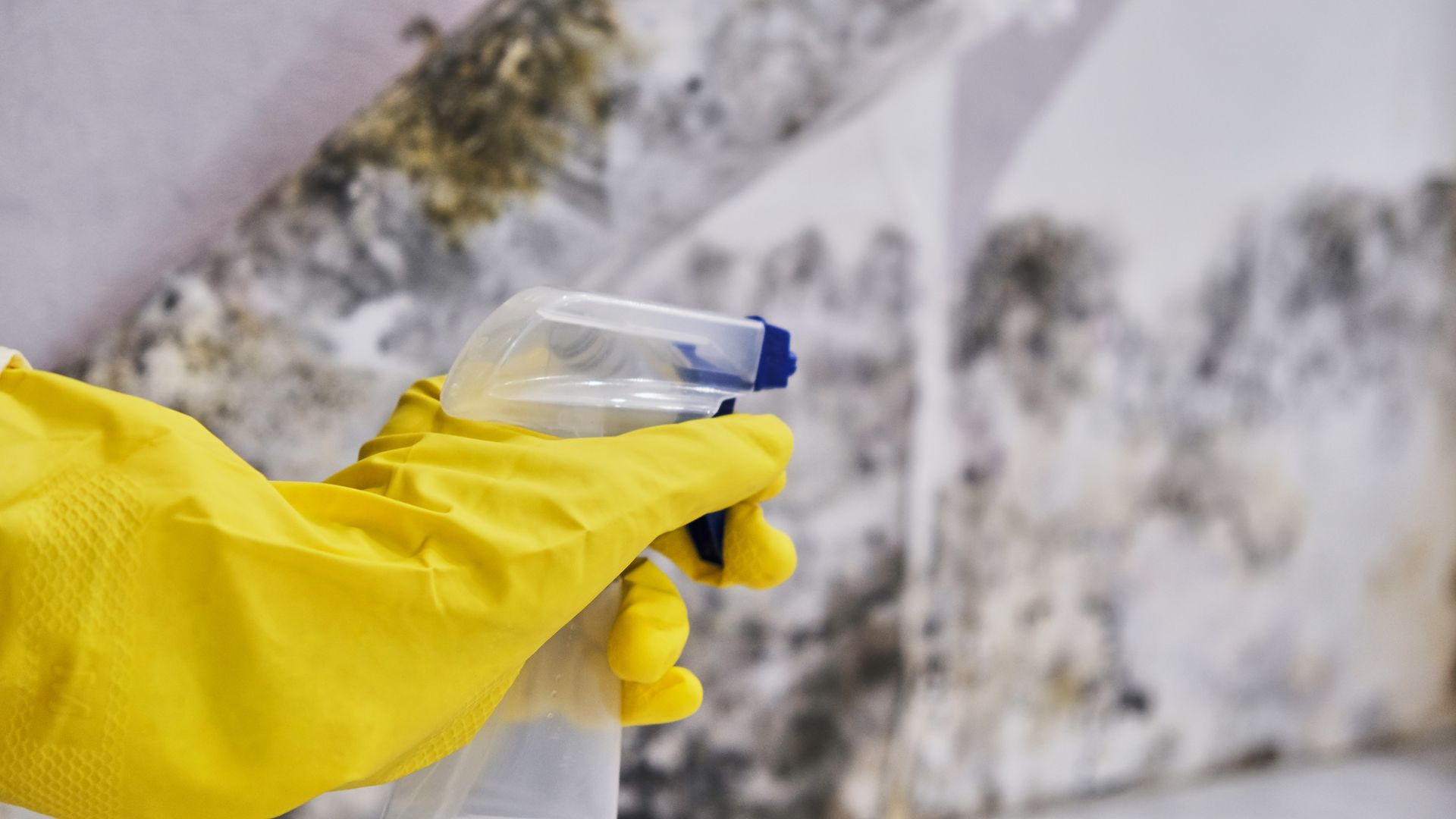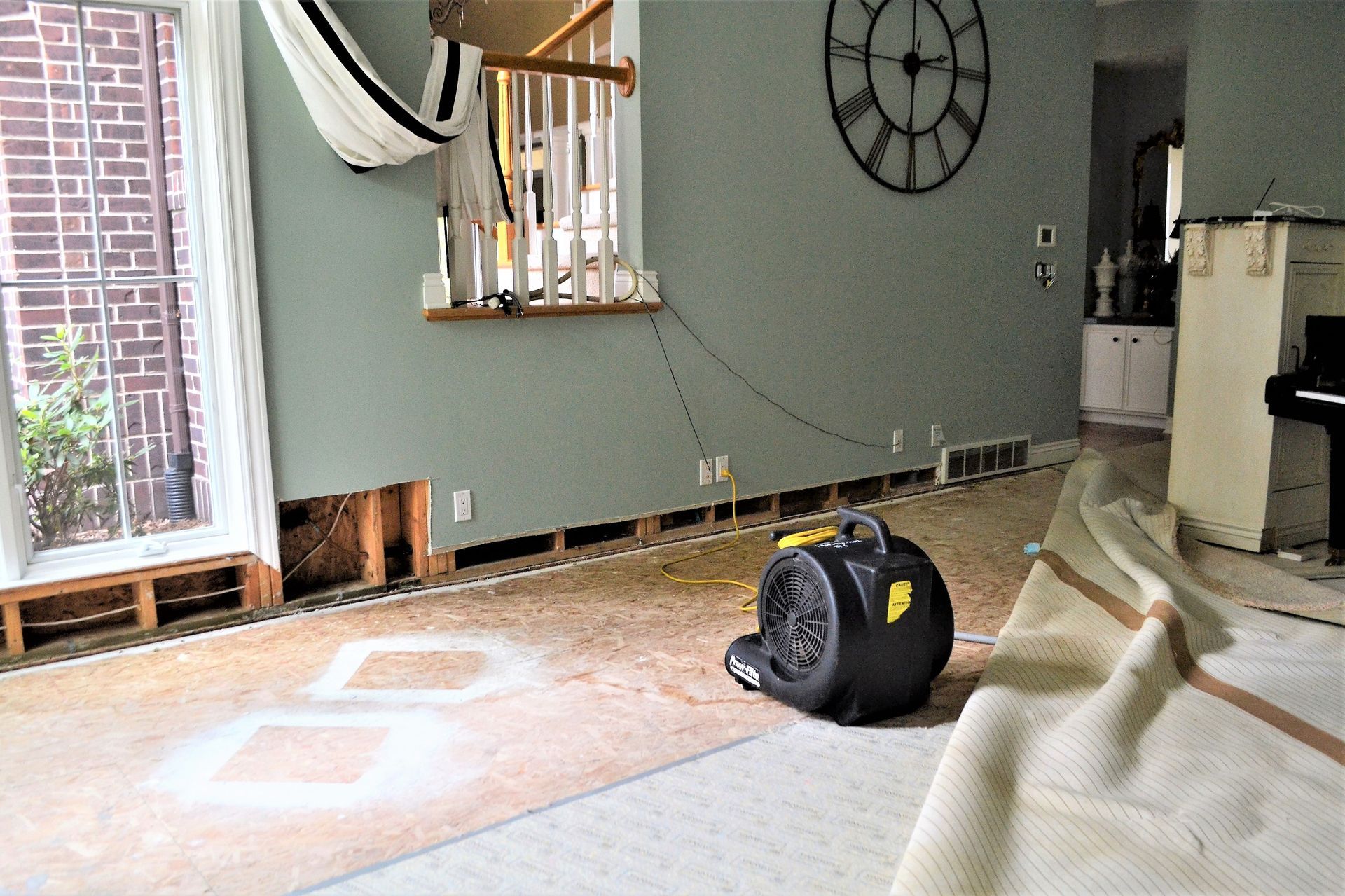Signs of Mold in Your Home and How to Remove It
Signs of Mold in Your Home and How to Remove It
Mold is a common household problem that many homeowners overlook until it becomes a serious issue. While some mold growth is visible, much of it remains hidden behind walls, under carpets, and in damp corners, silently spreading and affecting indoor air quality.
Mold is more than just an unsightly nuisance. It can trigger respiratory problems, worsen allergies, and even lead to structural damage in your home. Identifying mold early and taking the right steps for mold removal is crucial in maintaining a healthy living environment.
At Triology Restorations, we specialize in mold remediation, providing expert mold removal services to homeowners who need professional assistance in eliminating mold from their properties. If you suspect mold in your home, it is essential to act quickly. In this guide, we’ll cover the most common signs of mold, its health risks, and how to remove and prevent it effectively.

What Causes Mold Growth?
Mold thrives in moist, humid conditions, making certain areas of your home more susceptible to contamination. The most common causes of mold include:
- Leaky Pipes or Roofs – Unnoticed leaks create the damp conditions mold needs to grow.
- Poor Ventilation – Bathrooms, kitchens, and basements with limited airflow trap moisture.
- Flooding or Water Damage – Water damage that isn’t dried properly leads to mold growth within 24-48 hours.
- High Indoor Humidity – Homes with humidity levels above 60% create the perfect environment for mold.
- Condensation – Cold surfaces like windows and air ducts can collect moisture, leading to mold buildup.
If any of these conditions exist in your home,
mold remediation may be necessary to prevent mold from spreading.
Common Signs of Mold in Your Home
1. Persistent Musty Odor
A musty, damp smell in certain areas of your home—especially in basements, crawl spaces, or attics—can indicate hidden mold growth. Even if you can’t see the mold, the odor is often a warning sign that spores are present.
2. Visible Mold Growth
Mold can develop in different shades, such as black, green, white, or gray. It often starts as small spots but can quickly spread if not addressed. If you notice patches on walls, ceilings, or floors, mold removal is necessary to prevent further growth.
3. Water Stains or Discoloration
Yellow, brown, or dark water stains on ceilings or walls indicate a past or ongoing moisture issue. Mold often follows water damage, so these stains should not be ignored.
4. Peeling or Warped Surfaces
Excess moisture behind walls and floors can cause wallpaper to peel, paint to bubble, or wood flooring to warp. These are often signs that mold is growing beneath the surface.
5. Increased Allergy Symptoms
If you or your family members experience increased sneezing, coughing, skin irritation, or respiratory problems at home, mold exposure may be the cause. Mold spores in the air can aggravate allergies and asthma, making professional
mold cleaning services necessary.
6. Mold in HVAC Systems
Mold can grow inside
air ducts and spread spores throughout your home. If you notice a moldy smell when your HVAC system is running, you may need
mold remediation to prevent contaminated air from circulating.
7. Previous Water Damage
If your home has experienced a flood or water damage, even if it was years ago, mold may still be present behind walls or beneath flooring. Mold remediation companies near you can assess these areas and provide effective solutions.
How to Remove Mold Safely
For small mold infestations, homeowners can take steps to clean and remove mold using the right techniques. However, larger mold problems require the expertise of a mold removal company to ensure complete elimination.
DIY Mold Removal for Small Areas
If the mold-affected area is less than 10 square feet, follow these steps:
- Wear Protective Gear – Use gloves, a mask, and eye protection to avoid direct contact with mold spores.
- Contain the Area – Close doors and windows, and seal off the contaminated space to prevent spores from spreading.
- Use a Mold Cleaner – A mixture of vinegar, hydrogen peroxide, or baking soda can be effective in killing mold on
non-porous surfaces.
- Scrub the Surface – Use a brush to remove mold from tile, glass, or metal surfaces. Avoid using bleach on porous materials, as it only kills surface mold without removing its roots.
- Dry the Area Thoroughly – Mold thrives in moisture, so ensure the cleaned area is completely dry to prevent regrowth.
While small mold problems can sometimes be handled with DIY methods,
mold remediation professionals should be called for more extensive mold infestations.
When to Call a Mold Specialist
Certain mold problems are too hazardous or widespread for homeowners to handle alone. You should contact a mold removal company if:
- The mold spreads across an area exceeding 10 square feet.
- Mold is growing inside walls, ceilings, or flooring
- You suspect
black mold, which can release toxic spores
- You or your family members experience ongoing respiratory symptoms
- The mold is inside your
HVAC system
If you’re looking for mold remediation companies near you, Triology Restorations has the expertise to remove mold safely and prevent future outbreaks.
Professional Mold Remediation Process
At Triology Restorations, we follow industry-leading techniques to eliminate mold completely.
Step 1: Inspection & Testing
Our
mold specialists conduct a thorough inspection, testing air quality and identifying moisture sources that contribute to mold growth.
Step 2: Containment & Air Filtration
To prevent cross-contamination, we seal off affected areas and use
HEPA air filtration systems to capture airborne mold spores.
Step 3: Mold Removal & Cleaning
We use advanced mold removal solutions and
HEPA vacuuming to remove mold from all contaminated surfaces. If mold has penetrated drywall or flooring, affected materials are safely removed and replaced.
Step 4: Prevention & Moisture Control
Once the mold is removed, we apply antimicrobial treatments and provide moisture control recommendations to prevent regrowth.
How to Prevent Mold Growth in Your Home
Preventing mold starts with moisture control. Here’s how to keep your home mold-free:
- Fix Leaks Immediately – Repair plumbing leaks, roof leaks, and foundation cracks as soon as possible.
- Reduce Indoor Humidity – Keep humidity levels between
30-50% using a dehumidifier.
- Improve Ventilation – Use exhaust fans in bathrooms and kitchens to remove excess moisture.
- Dry Water Damage Quickly – Any spills, leaks, or floods should be dried within
24-48 hours.
- Use Mold-Resistant Products – Mold-resistant drywall, paint, and insulation can help prevent growth in moisture-prone areas.
Even with the best precautions, mold can still develop. If you suspect mold in your home, professional
mold mitigation can help address the issue before it worsens.
Call Triology Restorations for Expert Mold Removal
Mold growth should never be ignored. If you’re searching for mold removal near me, Triology Restorations is your trusted local expert in mold remediation.
We provide fast, reliable mold cleaning services and mold removal in Mesa, Paradise Valley, and surrounding Arizona areas.
Call us today for a professional mold inspection and restore the safety of your home.
Triology Restorations
📞
480-772-0058
📍
Serving Mesa, Paradise Valley, and surrounding areas
Take control of your indoor air quality—contact us today for expert mold removal services.

